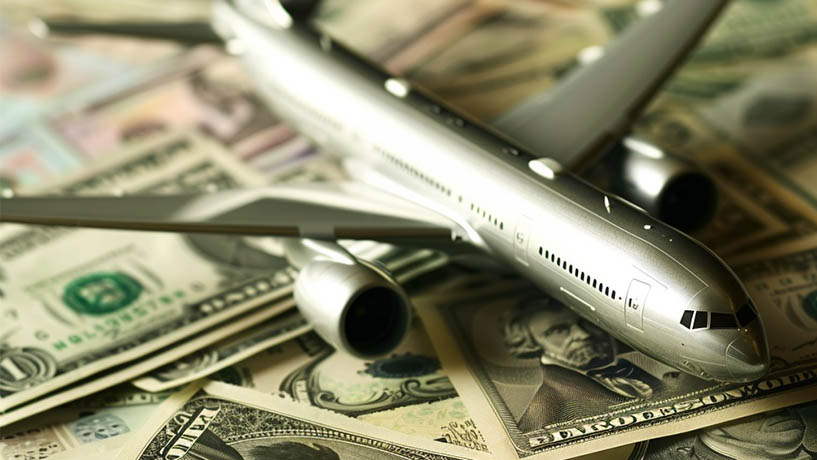For years, I chased the excitement of Airmiles, free flights, shiny electronics, even a cordless vacuum that handled pet hair like a champ. But after tracking my credit card spending and rewards for over 12 months, I realized something that completely changed how I use rewards programs.
If you’re spending thousands every year, your rewards should actually reward you. In this breakdown, I’ll show you exactly how much I earned with Airmiles versus what I would’ve earned with cashback, and how that math helped me switch teams. If you’re wondering which program puts more back in your pocket, you’ll get the full comparison, backed by real numbers and real outcomes.
What’s the Difference Between Cashback and Air Miles?
Both cashback and air miles promise rewards for spending you’re already doing, but the value and effort behind each one are very different. I’ve used both for years, and here’s what I’ve learned — not just in theory, but from watching every dollar add up.
Cashback is simple. You spend money, and a percentage comes back to you as real, usable cash. No need to check redemption charts or wait for deals. That money can go toward bills, savings, or whatever makes sense for you in the moment. It’s flexible, instant, and easy to track.
Air miles feel more exciting at first. You’re earning points that can be redeemed for flights, gadgets, gift cards, even groceries. But what those points are worth depends on how and when you use them. I’ve redeemed Airmiles for everything from an Apple iPod to a Shark vacuum, but it took careful planning and years of saving miles to make those redemptions feel worth it.
If you like predictability and control, cashback delivers. If you enjoy the challenge of squeezing maximum value out of a point system, air miles can still work. But most people don’t realize how much effort it takes to make those points actually pay off — or how often they fall short.
What I Actually Earned After Spending $59,000
After a full year of using my BMO Airmiles credit card, I sat down and looked at the numbers. I had spent $59,592.79, and in return, I earned 3,216 Airmiles. When redeemed for groceries at Metro, those points were worth about $338.
At first glance, that sounds decent — until you run the comparison.
If I had earned just 1% cashback on that same spending, I would’ve received $595. That’s nearly $260 more, with no restrictions and no need to log in to track redemption values.
And while I had some great redemptions through Airmiles over the years — like my Shark Rocket Pet Pro vacuum (3,610 miles), an HP Envy Pro printer, and even my first iPod — most of those dream rewards took years of point-hoarding to pull off. In many cases, the “savings” barely outweighed what I could have bought during a sale or with cashback.
Here’s the part people don’t talk about: unless you’re collecting miles aggressively across multiple partners and promotions, the returns are slow. That Shark vacuum, for example, cost me 3,610 dream miles. If I had used those same miles for groceries instead, I would have saved around $380. The vacuum retails for $445. I saved maybe $65, but only because I waited years to cash them in.
If you’re not a points-maximizing ninja, you’re probably leaving money on the table.
Why Air Miles Come With Hidden Costs
On paper, air miles look like free rewards. But once you start redeeming them, the hidden costs show up — and they chip away at the value fast.
1. Redemption rules change everything.
Flights can be blocked out during peak times. Reward seats sell out. And sometimes the number of miles needed for a “free” ticket jumps without warning. Unless you’re flexible or planning far in advance, the process can feel like a game you didn’t sign up to play.
2. Dream rewards aren’t always a dream deal.
That Shark vacuum I got for 3,610 miles felt like a win, but when I did the math, it was only about $65 in actual savings. If I’d redeemed those miles for groceries, I could have saved nearly as much — and used the money where I needed it most. Many dream items are priced higher in points than their cash equivalent, especially when you factor in shipping or limited selection.
3. Your points can expire.
If you stop earning or redeeming for a while, those points can vanish. That’s not something most people track — and it’s an awful surprise if you’ve been saving for a big reward.
4. You don’t control the value.
Cashback is consistent. Air miles fluctuate. You might get a great redemption once, but the next time, the same amount of miles won’t go nearly as far. That unpredictability makes it harder to plan — and easier to waste points on lower-value options just to use them up.
Air miles can still work if you love the strategy side and enjoy working the system. But if you’re looking for clear returns with no fine print, cashback is usually the smarter choice.
Why Cashback Was the Clear Winner for Me
After a year of tracking my spending and comparing reward values side by side, the numbers made the decision for me.
With Airmiles, I got about $338 in value after spending close to $60,000. If I’d simply earned 1% cashback, I would’ve walked away with $595 — and that’s not even including bonus categories or welcome offers some cashback cards include.
But it wasn’t just the math. It was the freedom.
Cashback lets me:
- Put money toward whatever I want — bills, travel, groceries, fun
- Save without pressure to redeem by a certain date
- Earn 2.25% interest on that cash when I park it in my Wealthsimple account
- Track my rewards instantly, without logging into separate portals or hunting for deals
There’s no guesswork. No waiting. No wondering if I should hold onto my points in case something better comes up. Every month, I see exactly how much I’ve earned — and that reward stays valuable no matter what.
Airmiles felt exciting at first. Cashback feels solid, predictable, and practical — and in the end, that’s what actually puts money back in your hands.
Still Want to Use Airmiles? Here’s How to Maximize Them
If you’re not ready to ditch Airmiles completely, there are ways to make the most of what you earn — but it takes intention.
Use both your Airmiles card and credit card.
When a store accepts Airmiles, swipe your loyalty card first, then pay with your Airmiles credit card. This stacks your earning potential and helps you build up points faster. It’s one of the few times double-dipping actually works in your favor.
Redeem points for dream rewards, not groceries.
Grocery redemptions are straightforward, but they usually offer less value per mile. If you’re patient, saving for larger dream rewards like electronics or household tools can stretch your miles further — just make sure the item isn’t marked up compared to retail prices.
Watch for limited-time promotions.
Sites like Airmiles.ca often run bonus events where you can earn more points on certain purchases or get discounts on redemptions. If you’re going to buy something anyway, checking for one of these events first can give you extra value with no extra effort.
Set a goal and redeem regularly.
Letting points sit “just in case” can lead to expiration or devaluation. Know what you want, track how close you are, and use your miles with purpose. Even a small redemption — like movie tickets or $10 off groceries — can feel satisfying if you’re not trying to game the system.
Airmiles can still be rewarding, but they work best when you treat them like a bonus, not a savings plan.
The Hybrid Strategy That Actually Works
You don’t have to pick sides. I didn’t.
After years of using Airmiles and switching to cashback, I landed on a system that lets me earn from both — without overcomplicating my spending.
Here’s what I do now:
I still swipe my Airmiles loyalty card at places like Metro and Shell. If I’m already there, I might as well pick up a few extra miles. I now only use those points for dream rewards, where I can squeeze the most value out of them.
But all my actual purchases go on my Wealthsimple Cash card. It gives me 1% cashback on everything I buy and deposits that money straight into a high-interest account earning 4.5%. There are no fees, and I don’t need to track a thing.
That means I:
- Get predictable cashback on every purchase
- Earn interest on top of it
- Still collect miles passively when I shop at partner stores
- Avoid letting points pile up unused
It’s not about chasing every reward. It’s about making the most of what I’m already spending — and making sure every dollar does more than just disappear into a receipt.
This strategy has been the easiest and most rewarding system I’ve used, and it doesn’t require me to think about it every time I pay for something.
Which One Actually Works Best for You?
If you’re earning rewards on your spending, you should feel like you’re getting something real in return — not just collecting points for the sake of it.
Here’s a quick way to decide:
Cashback might be your best fit if:
- You want rewards that are easy to understand and easy to use
- You value flexibility over travel perks
- You’re spending across a wide range of categories
- You like seeing consistent returns, month after month
Airmiles might work better if:
- You regularly shop at Airmiles partner stores
- You’re organized and intentional with redemptions
- You enjoy saving for big-ticket dream rewards
- You travel often and can take advantage of flight deals
Want both? That works too.
My hybrid setup gives me the best of both worlds: cash I can use now, and points I can spend later — without sacrificing one for the other.
No matter what you choose, the goal is the same: get the most out of your everyday spending. And when you understand how each system really works — not just what the ads say — you’re in a much better position to make every dollar go further.
Want to Try the Cashback Strategy I’m Using?
I switched to the Wealthsimple Cash Card to earn 1% cashback on all my debit purchases — no categories, no expiration, no guesswork. Just real money back on everything I buy.
That cashback goes into a high-interest account earning 2.25%, so my money keeps working even when I’m not spending it.
👉 Use my referral link and we’ll both get $25 when you sign up and fund your account. No monthly fees, and no credit check required.
It’s hands-down the simplest way I’ve found to make my everyday spending pay me back.
Let’s both get $25 when you fund a Wealthsimple account. 🎁 T&Cs apply.
Frequently Asked Questions
Is 1% cashback really better than Airmiles?
It depends how you use your rewards, but for most people, yes. Cashback gives you consistent value on every dollar you spend. Airmiles can work — but only if you’re redeeming for high-value rewards and tracking the system closely. If you’re not a points optimizer, cashback usually puts more back in your pocket.
Can I still collect Airmiles if I use a cashback card?
Yes. I still swipe my Airmiles loyalty card at partner stores like Metro and Shell. I just pay with my Wealthsimple Cash Card instead of an Airmiles credit card. That way I get the best of both — points and cashback.
Do I need a credit check to sign up for Wealthsimple Cash?
Nope. It’s a prepaid card, not a credit card, so there’s no credit check and no risk of racking up debt.
What’s the interest rate on the Wealthsimple Cash account right now?
As of now, it’s 2.25% interest on all your deposits. That’s significantly higher than most regular checking accounts, which often pay close to zero.
How do I get the $25 bonus?
Use my referral link. Once you sign up and fund your account, Wealthsimple will automatically send you (and me) a $25 cash bonus. No hidden catches — just free money for trying something better.



